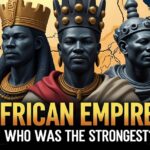Part II of Inside Raila Odinga’s Years of Detention and Exile — tracing his return to Kenya, his reinvention as a reformist leader, and the enduring legacy that outlived him.
Return to Kenya — Rebuilding from Exile and Redefining Opposition
When Raila Odinga returned to Kenya in the early 1990s, it was to a country that had changed — and yet, in many ways, had not. The air was heavy with political tension, and the promise of multiparty democracy was only beginning to flicker after years of single-party rule. His return marked both a personal homecoming and a symbolic reawakening for Kenya’s reformist movement.
A cautious homecoming
By 1991, internal and external pressure on President Daniel arap Moi’s government had reached a breaking point. The global wave of democratic transitions sweeping Africa made it increasingly difficult for the regime to suppress calls for pluralism. Amid this shift, Raila’s return following years of exile and international advocacy was cautiously welcomed by supporters and watched warily by the state.
Accounts from that period describe him as leaner, visibly older, but burning with the same conviction that had carried him through imprisonment and displacement. Family members later recalled his first days back as a mix of joy and apprehension: joyous reunions overshadowed by the risk of renewed persecution. “He came back with hope, but not peace,” one close ally once said a reflection of both his optimism and his awareness that old wounds could reopen at any time.
Re-entry into political life
Soon after his return, Raila joined his father, Jaramogi Oginga Odinga, and other reformists in forming the Forum for the Restoration of Democracy (FORD) — a broad coalition demanding free elections and constitutional reform. The group split soon after into FORD-Kenya and FORD-Asili, but Raila’s role within FORD-Kenya, alongside his father, marked his re emergence as a formidable national figure.
In 1992, he won the Lang’ata parliamentary seat, a victory that symbolised the resilience of Kenya’s opposition movement. His campaign was grounded in the language of resistance and renewal — a narrative of survival from the cells of Nyayo House to the ballot box. For his supporters, it was proof that the long years of exile had not silenced him; they had tempered him.
The emotional toll of return
Reintegration came with its own strain. Many of those who had endured detention or exile struggled to fit back into everyday life to rebuild family relationships, to live without fear of surveillance. For Raila, these adjustments ran parallel to his public duties.
His wife, Ida Odinga, later reflected on those years as a test of balance — between rebuilding their family and sustaining a movement that demanded constant visibility. Close friends described moments of visible exhaustion but also flashes of humor, warmth, and unshakable resolve. The same quiet intensity that had helped him endure prison now powered his relentless drive to reshape the system from within.
Toward Reform and National Leadership
Through the 1990s and early 2000s, Raila became one of the central architects of Kenya’s pro- democracy transformation. His involvement in constitutional reform, coalition-building, and anti-corruption campaigns made him indispensable to the political process.
By 2007, when he ran for the presidency, Raila Odinga was no longer simply a survivor he was a statesman-in-waiting, carrying the moral authority of one who had suffered for the nation. His story resonated deeply among the marginalized: unemployed youth, political prisoners, and families whose pain mirrored his own.
The journey from prisoner to prime minister would come to symbolize Kenya’s uneven path from repression to reform proof that endurance could indeed bend history.
Wounds and Legacy
By the time Raila Odinga rose to the premiership in 2008, his body had long carried the private cost of his public defiance. The faint slowness of his walk, the way he sometimes shielded his eyes from bright light, the brief pauses during long speeches all bore quiet witness to the years of confinement and torture that had reshaped both his health and his legend.
The Unseen injuries
Supporters and family have long asserted that the wounds of Nyayo House never fully healed. Human rights accounts from the 1980s describe brutal interrogations involving beatings, sensory deprivation, and long isolation. Many linked his later neurological complications to those years of torture.
In the 2000s, Raila underwent treatment for hydrocephalus, a condition involving fluid build-up in the brain reportedly connected to his earlier head injuries. Friends spoke of recurring
headaches and dizziness, but also of his refusal to let illness slow his pace. “He learned to live with pain,” one aide once said, “and to make it part of his strength.”
Legacy Through Achievement
Raila Odinga’s political life became a masterclass in transforming endurance into purpose. The man who emerged from prison soft-spoken and frail rebuilt himself into one of Kenya’s most formidable leaders a bridge between the liberation dreams of the past and the democratic ambitions of the present.
For the Luo community, he became more than a politician. “Baba” was not just a nickname it was a title of reverence. In Kisumu, Bondo, and along the lakeshore towns, his portrait adorned matatus and shopfronts. Songs called him Jakom — the rightful chair — heir to a lineage of struggle and pride. His rallies were not political meetings but near-spiritual gatherings, filled with song, dance, and devotion.
As Prime Minister (2008–2013), Raila was instrumental in enacting the 2010 Constitution, one of Africa’s most progressive frameworks. It institutionalized devolution, entrenched the Bill of Rights, and curtailed executive overreach ideas that echoed his long-held belief that justice must be built into the system, not left to chance.
Even his fiercest rivals acknowledged his vision and tenacity. His charisma transcended class and tribe, allowing him to speak to farmers, students, and urban workers alike. To many, he embodied both the resilience of the lakeside and the restless pursuit of a fairer Kenya.
By the time he made his final continental bid for Chairperson of the African Union Commission in 2024 Raila Odinga had become something larger than office. He was a living testament to sacrifice and faith the man who carried his people’s unfinished dream.
Faith, Mortality, and the Cost of Conviction
In his later years, frailty became both a physical reality and a national metaphor. The hydrocephalus that burdened him was seen by some as symbolic the mind that once dreamed for millions now weighed down by the pressures of history. Yet even then, Raila remained steadfast.
He spoke more of faith than politics, often in churches and small gatherings. His humor softened his message; his calm, once forged in cells, had matured into grace. To his followers, this humility the refusal to become bitter was his final act of leadership.
A Nation’s Mirror
When Raila Odinga died in 2025, Kenya did not just lose a politician it lost a mirror. His life had reflected every tension in the nation: ethnic fault lines, political betrayals, the long quest for justice. His name evoked both devotion and debate, a sign that his legacy was alive and unresolved.
For the Luo community, his death felt biblical. Baba had not reached Canaan, but he had shown the way. For Kenya, his passing was a reckoning a reminder that democracy must be continually defended, not inherited.
Towards Recognition, Repair, and Healing
In the wake of Raila Odinga’s death, Kenya stands before a moral crossroad. His life story is not just political biography it is a map of the nation’s conscience. The detentions, betrayals, and silences of past decades are not only his story but ours.
True recognition means confronting what created his suffering: the machinery of repression, the apathy of privilege, and the politics of division. Repair must go beyond memorials; it must live in how Kenya teaches its history, honors its dissenters, and reforms its institutions.
Perhaps Raila’s greatest legacy lies here in compelling Kenya to remember differently. To mourn not only his loss but the wounds his journey exposed. To understand that freedom is not comfort but a discipline of empathy.
Why This Matters
Because history is not only made of victories it is also made of scars. The unhealed pain of political detainees and exiles weakens the moral foundation of democracy. Raila Odinga’s life with its triumphs and traumas is a lesson in endurance and accountability.
He reminds Kenya, and Africa, that democracy is not secured through laws alone, but through the courage to remember those who paid for it. His story is unfinished not because he failed, but because he handed the work to those who remain.
Related Posts
-
Inside Raila Odinga’s years of detention and exile — and the scars that shaped his politics
Tracing Raila Odinga’s journey from detention and exile to Prime Minister and continental statesman, exploring…
-
500 Kenyans Removed from the Wealth List
Five hundred Kenyans were dropped from the exclusive list of dollar millionaires in 2023. This…
-
The Forgotten kingdoms of the Sahel: Ghana, Mali, and Songhai’s empires of gold and learning
From the 8th to the 16th centuries, the wide grasslands and deserts of the Sahel…


